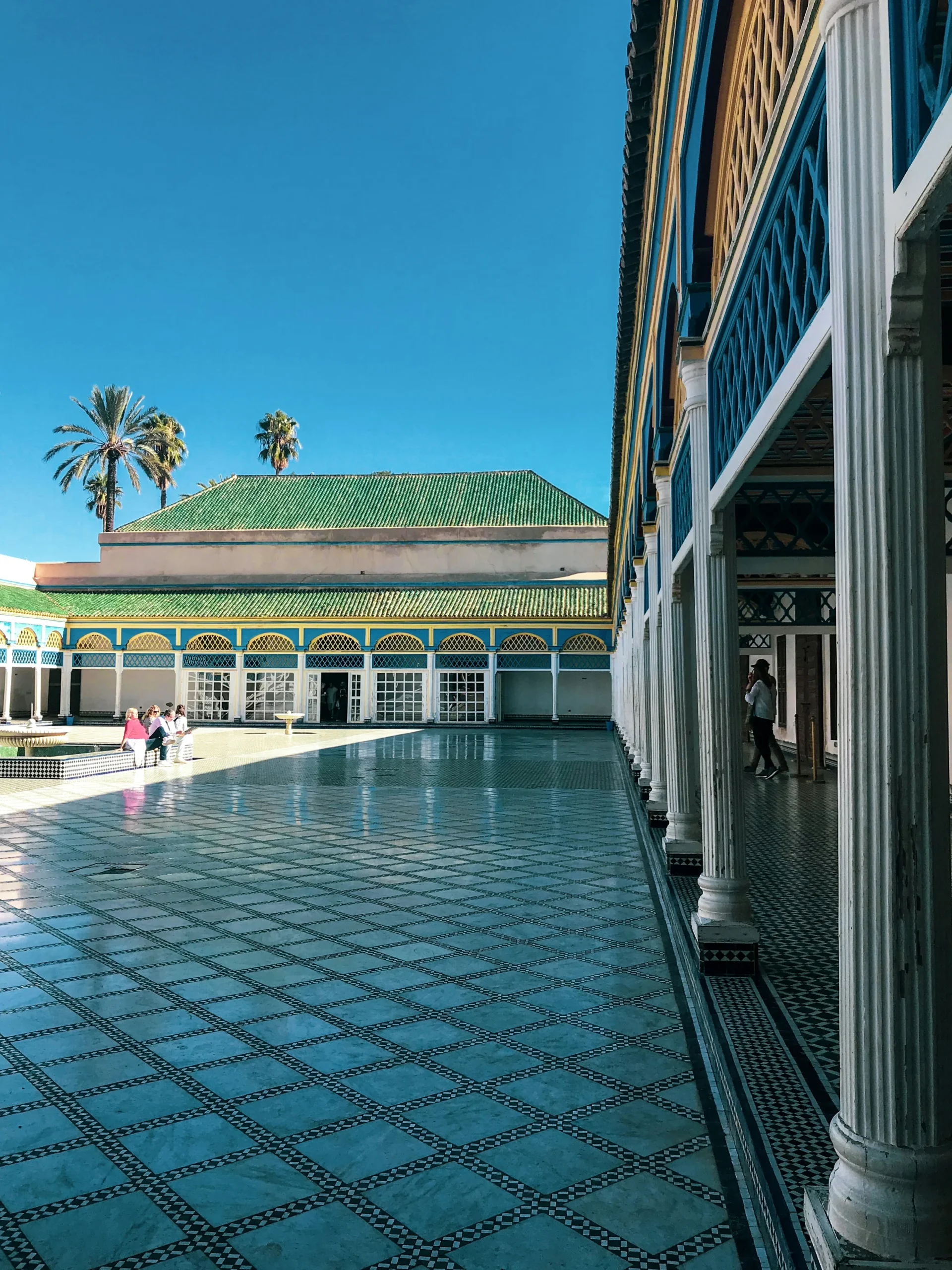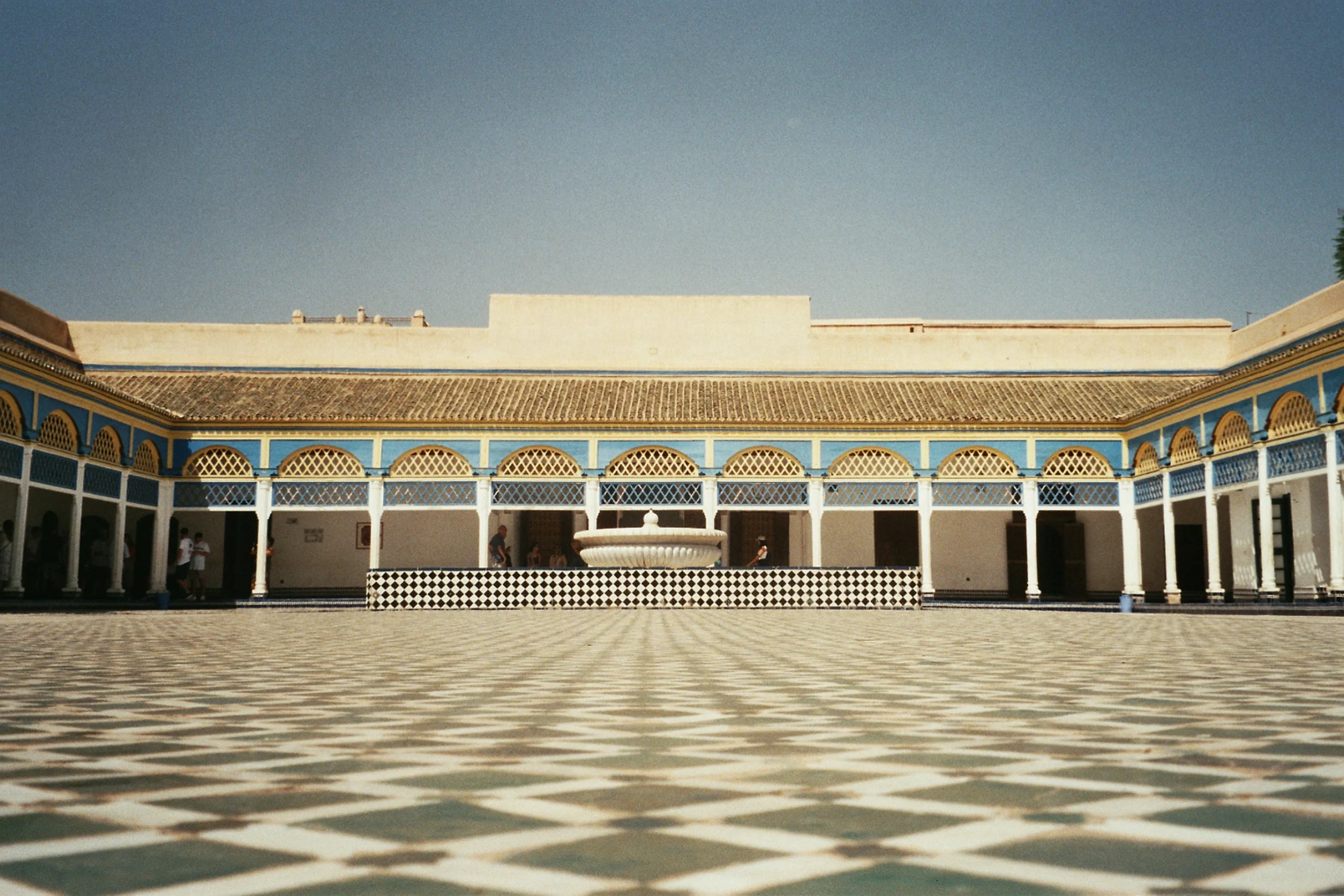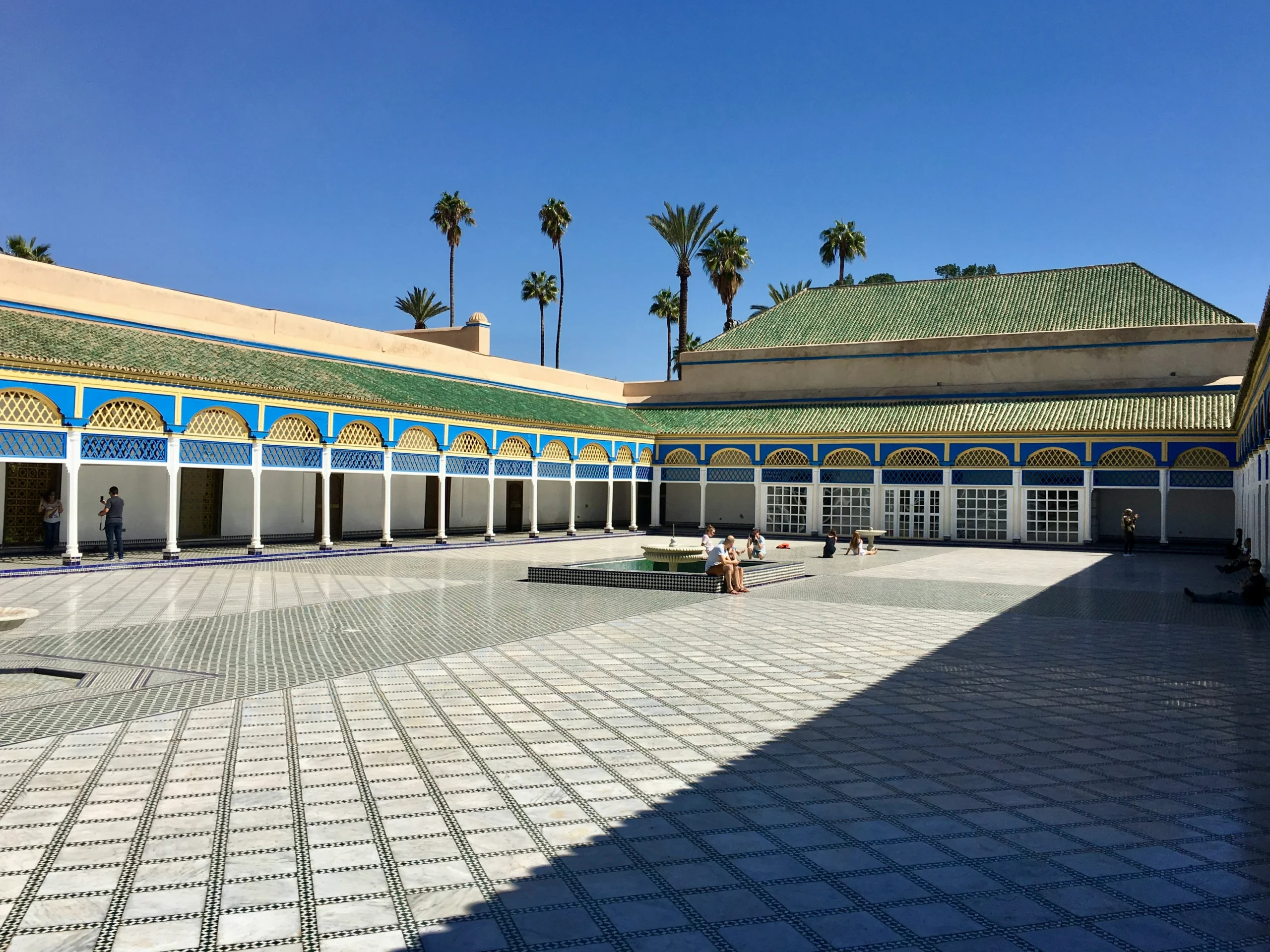The Ultimate Guide to Bahia Palace: History, Architecture, and Visiting Tips
Introduction
Nestled in the heart of Marrakech’s ancient medina, Bahia Palace stands as a breathtaking testament to Morocco’s rich architectural heritage and cultural splendor. Built in the late 19th century, this magnificent palace complex offers visitors a glimpse into the opulent lifestyle of Moroccan nobility during that era. With its intricate mosaics, stunning courtyards, and lush gardens, the Bahia Palace has become one of Marrakech’s most visited attractions, drawing travelers from around the world eager to experience its beauty and historical significance.
In this comprehensive guide, we’ll explore the fascinating history of Bahia Palace, marvel at its architectural wonders, and provide you with essential information to make your visit truly memorable. Whether you’re planning your first trip to Marrakech or seeking to deepen your understanding of Moroccan cultural treasures, this guide to Bahia Palace will serve as your perfect companion.
The Rich History of Bahia Palace
The story of Bahia Palace Marrakech begins in the 1860s during the reign of the Alaouite dynasty. The palace was initially commissioned by Si Moussa, the Grand Vizier of Sultan Hassan I, as a modest residence. However, it was his son, Ba Ahmed ben Moussa, who would transform this property into the magnificent palace we see today.
Si Moussa’s Vision
Si Moussa, a former slave who rose to become the Grand Vizier (equivalent to a prime minister), began the construction of the palace in 1866. His initial vision was relatively modest compared to what the palace would eventually become. During his tenure as Grand Vizier, he incorporated design elements from various cultures, creating a foundation for what would become one of Morocco’s architectural treasures.
Ba Ahmed’s Expansion
After Si Moussa’s death in 1890, his son Ba Ahmed inherited the palace and greatly expanded it during his time as Grand Vizier to Sultan Moulay Abd al-Aziz. Ba Ahmed had grand ambitions for the property and employed hundreds of craftsmen to work on the palace for nearly 15 years.
The name “Bahia” means “brilliance” or “beauty” in Arabic, and many historians believe the palace was named after Ba Ahmed’s favorite wife. Ba Ahmed expanded the complex to include approximately 150 rooms, including numerous courtyards, gardens, and living quarters for his four wives and 24 concubines.
Post-Royal Era
Following Ba Ahmed’s death in 1900, the palace was raided, and many of its treasures were stolen. During the French Protectorate era (1912-1956), the palace served as the residence of the French Resident General. After Morocco gained independence, Bahia Palace became a cultural heritage site managed by the Moroccan government, opening its doors to visitors from around the world.
Architectural Marvels of Bahia Palace

The architecture of Bahia Palace represents the pinnacle of Moroccan craftsmanship, combining Islamic, Andalusian, and Moorish influences to create a masterpiece of design and decoration.
Courtyards and Gardens
The palace features several courtyards, each more impressive than the last. The Grand Courtyard (Court of Honor) spans over 1,500 square meters and is adorned with a central fountain and surrounded by rooms that once served as reception halls.
The smaller, more intimate courtyards provide peaceful retreats from the bustling city outside. These spaces feature:
- Intricate zellige (mosaic tilework)
- Ornate fountains
- Fragrant citrus trees and native plants
- Symmetrical garden designs reflecting Islamic principles of paradise
Interior Decoration
Inside the palace, visitors are treated to a spectacular display of traditional Moroccan craftsmanship:
| Decorative Element | Description |
|---|---|
| Zellige | Geometric mosaic tilework in vibrant colors |
| Carved Stucco | Intricate plasterwork featuring floral and geometric patterns |
| Cedar Ceilings | Hand-painted wooden ceilings with detailed geometric designs |
| Marble Columns | Imported Carrara marble crafted into elegant support structures |
| Painted Doors | Ornately decorated wooden doors with brass accents |
The attention to detail is astonishing, with no two rooms featuring identical decorative patterns. The craftsmanship demonstrates the skill of Moroccan artisans who created these masterpieces without the aid of modern tools.
Notable Areas
Some of the most remarkable spaces within the palace include:
- The Grand Courtyard: The largest open space in the palace, used for grand ceremonies and gatherings
- The Petit Riad: A smaller, more intimate courtyard surrounded by residential quarters
- The Council Chamber: Where Ba Ahmed would meet with officials and conduct business
- The Harem Quarters: Private living areas for the Grand Vizier’s wives and concubines
Practical Information for Visitors
Bahia Palace Entrance Fee and Hours
- Entrance Fee: 70 MAD (approximately $7 USD) for adults
- Opening Hours: 9:00 AM to 5:00 PM, seven days a week
- Audio Guide: Available for an additional 30 MAD (recommended for a deeper understanding)
Tip: Keep your entrance ticket handy as staff may check it as you move between different sections of the palace.
Best Time to Visit Bahia Palace
The best time to visit Bahia Palace is either early morning (9:00-10:30 AM) or late afternoon (3:30-5:00 PM) to avoid the largest tour groups. Visiting during these hours allows you to experience the palace with fewer crowds and better lighting for photography.
Seasonally, spring (March to May) and fall (September to November) offer the most pleasant weather for exploring. The summer months can be extremely hot in Marrakech, while winter sometimes brings cool, rainy days.
Location and Getting There
Bahia Palace Marrakech is located in the southern part of the medina, near the Mellah (Jewish Quarter). The full address is:
Rue Riad Zitoun el Jedid
Marrakech 40000, Morocco
The palace is easily accessible by:
- Walking: A 15-minute walk from Jemaa el-Fnaa square
- Taxi: Available throughout the city (ensure the driver uses the meter)
- Horse-drawn carriage: A touristy but charming option
Dress Code and Visitor Etiquette
While Bahia Palace doesn’t enforce a strict dress code like religious sites in Morocco, respectful attire is appreciated:
- Cover shoulders and knees
- Wear comfortable shoes as you’ll be walking on uneven surfaces
- Bring a hat and water, especially during summer months
- Photography is permitted (without flash)
Guided Tours vs. Self-Guided Exploration
Bahia Palace Tours
Several tour options are available for visitors who want a deeper understanding of the palace:
- Official Palace Guides: Available at the entrance for approximately 100 MAD per group
- Private Tours: Booked in advance with specialized tour companies like Sahara Discovery
- Group Tours: Part of broader Marrakech city tours
Many visitors find that guided Bahia Palace tours significantly enhance their experience by providing historical context and pointing out details that might otherwise be missed. Local tour operators such as Sahara Discovery offer expert-led tours of the palace as part of their Marrakech cultural experiences, with guides who are well-versed in the palace’s history and architectural significance.
Self-Guided Visit
If you prefer to explore at your own pace:
- Allow 1-2 hours to see the palace properly
- Download an audio guide app before your visit
- Purchase a guidebook at the entrance
- Look for the small information plaques in each room (though these are limited)
Hidden Gems and Lesser-Known Facts

Beyond the main attractions, Bahia Palace holds several secrets and lesser-known features that add depth to your visit:
- Acoustic Design: The palace was designed with special acoustic features allowing conversations to be heard across rooms for security purposes
- Secret Passageways: Several hidden corridors allowed servants to move through the palace unseen
- Original Artifacts: Look for the few remaining original pieces of furniture and decorations that survived the looting
- Roof Access: Some tours provide access to upper levels with views of the Atlas Mountains
- Seasonal Gardens: The palace gardens showcase different plants throughout the year
“The Bahia Palace represents not just architectural beauty, but a fascinating chapter in Morocco’s political history when power shifted from royal hands to those of the Grand Viziers.” Moroccan historian Ahmed El Bouazzaoui
Beyond Bahia Palace: Related Attractions
After visiting Bahia Palace, consider exploring these nearby attractions to complete your Marrakech experience:
- El Badi Palace: Once even more splendid than Bahia, now an atmospheric ruin (10-minute walk)
- Saadian Tombs: Ornate mausoleums from the 16th century (15-minute walk)
- Dar Si Said Museum: Another stunning example of Moroccan architecture (5-minute walk)
- Mellah: Marrakech’s historic Jewish quarter (adjacent to the palace)
For those interested in exploring beyond Marrakech, Sahara Discovery offers expertly guided excursions that complement your cultural experience at Bahia Palace. Their range of 1-day to multi-day tours can take you from the historic sites of Marrakech to the stunning landscapes of the Atlas Mountains and the mesmerizing Sahara Desert, providing a comprehensive Moroccan experience.
Conclusion
Bahia Palace Marrakech offers visitors a magnificent journey through Morocco’s artistic and cultural heritage. From its humble beginnings to its current status as one of the country’s most treasured historical sites, the palace tells the story of ambition, artistry, and the fascinating political dynamics of 19th-century Morocco.
Whether you’re captivated by the intricate craftsmanship, intrigued by the historical narratives, or simply seeking a peaceful retreat from Marrakech’s bustling medina, Bahia Palace delivers an unforgettable experience. By planning your visit using the tips in this guide, you’ll be well-prepared to fully appreciate the brilliance and beauty that give this remarkable palace its name.
To truly immerse yourself in the rich cultural tapestry of Morocco, consider connecting your visit to Bahia Palace with wider explorations of this fascinating country. Reputable tour operators like Sahara Discovery can help craft a seamless journey that takes you from the historical wonders of Marrakech to other iconic Moroccan destinations, including the ancient imperial cities, coastal gems, and the magical Sahara Desert.
FAQs About Bahia Palace
1: How long does it take to visit Bahia Palace?
– Allow 1-2 hours for a thorough visit, depending on whether you take a guided tour.
2: Is Bahia Palace wheelchair accessible?
– The palace has limited accessibility with some uneven surfaces and steps. Some courtyards are accessible, but many interior spaces have barriers.
3: Can I take photographs inside Bahia Palace?
– Yes, photography for personal use is permitted throughout the palace. Flash photography is discouraged to protect the delicate decorations.
4: What’s the difference between Bahia Palace and El Badi Palace?
– While both are historical palaces in Marrakech, El Badi (built in the 16th century) is now mostly in ruins, while Bahia (built in the 19th century) remains largely intact with its original decorations.
5: Are there any restaurants near Bahia Palace?
– Several cafes and restaurants are located within a 5-10 minute walk from the palace, offering traditional Moroccan cuisine and international options.
6: Can I combine a visit to Bahia Palace with other attractions in Morocco?
– Absolutely! Tour companies like Sahara Discovery offer customized itineraries that include Bahia Palace as part of a broader Moroccan experience, connecting Marrakech’s cultural sites with adventures to the Atlas Mountains, desert excursions, and visits to other historic cities.




